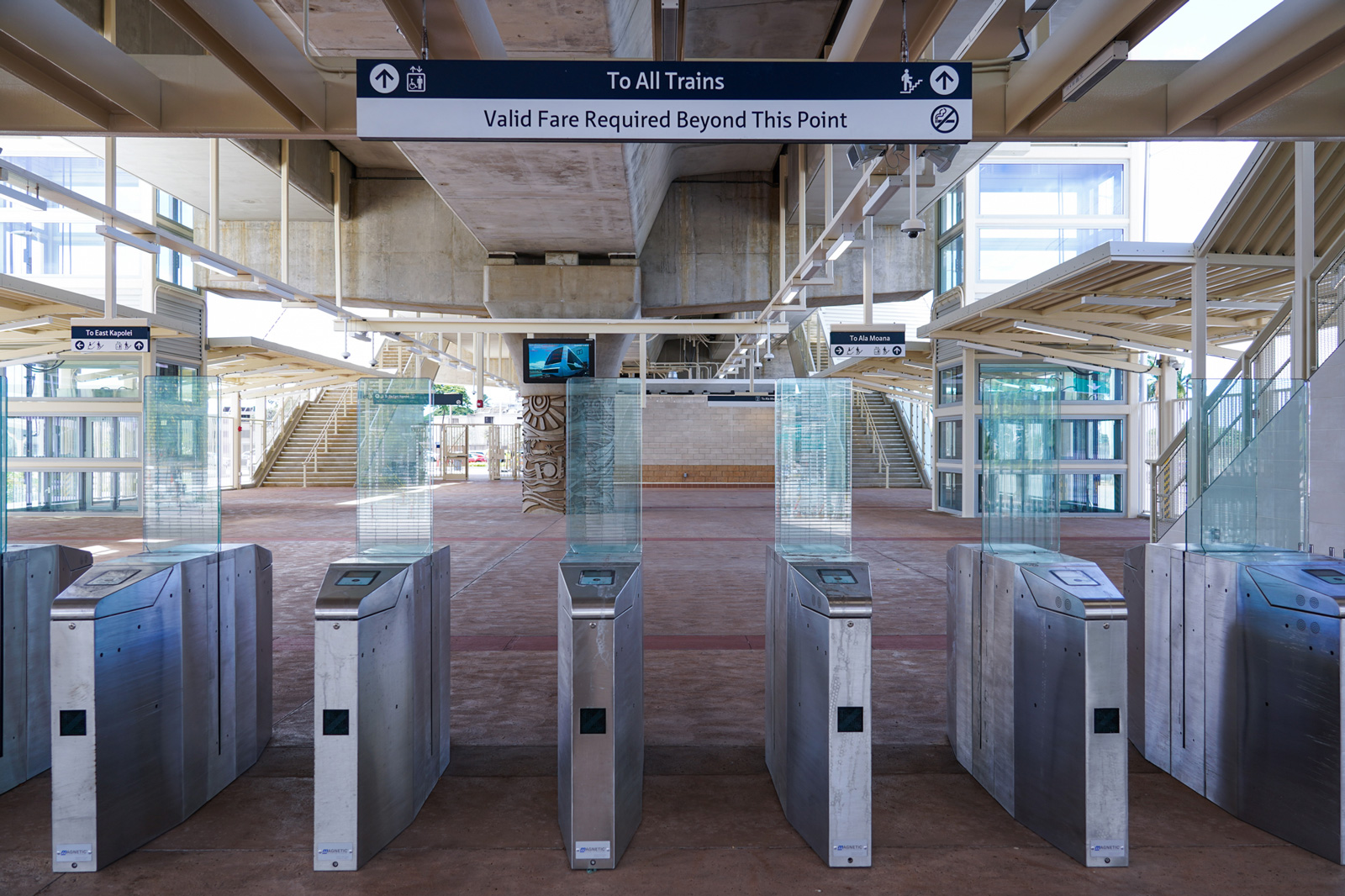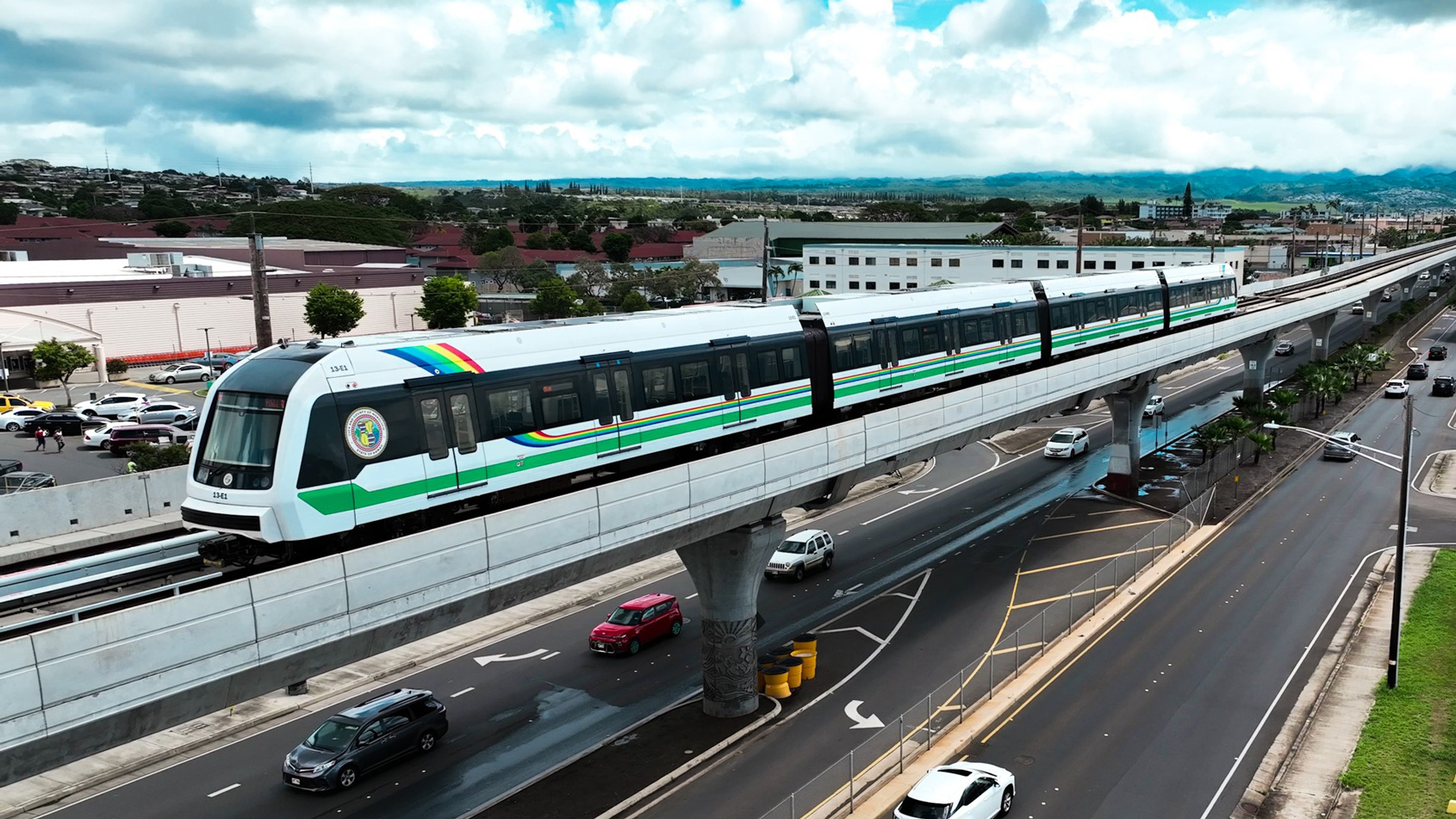Nearly 15 years after voters approved building it, Honolulu opened an 11-mile section of its long-awaited rail project on Friday, the first passenger train service on Oahu since the 1940s.
Honolulu Mayor Rick Blangiardi called the Skyline system the “largest public works project in Hawaii’s history.” Once complete, it will stretch about 20 miles from the communities west of Honolulu to the city’s downtown and civic districts. Officials expect about 84,000 passengers daily.
That could help alleviate Honolulu’s notorious traffic jams and reduce greenhouse gas emissions — ground transportation accounts for 20 percent of Hawaii’s total — as the state pursues its goal of being carbon neutral by 2045.
“We are all excited for the public to experience first-hand the transformative effect the rail will have for our island home,” Biangiardi said in a statement.
Building a light rail line to connect residents with downtown Honolulu has been a controversial idea since its initial proposal in the 1960s. Advocates said it would alleviate increasing traffic problems, while naysayers called it too costly and perhaps technologically infeasible.
Voters finally greenlit the idea in 2008, but construction has been stymied by delays, cost overruns, and safety concerns. The city initially said the project would cost about $5.2 billion and be completed by 2020. Now, it plans to spend about $9.3 billion, with some federal assistance, and finish by 2030 — with the line running about one mile shorter than planned due to rising costs. Critics question whether enough people will ride the train to have made the undertaking worthwhile.
The opening of the first section may help temper some of that pessimism. “Given the history and how many challenges this project has faced along the way, this is an amazingly wonderful accomplishment,” said Kathleen Rooney, director of transportation policy and programs at the Hawaii investment firm Ulupono Initiative.

The first section will include nine stops between the community of Kapolei and end about 10 miles away near Aloha Stadium. It will stop near a community center, shopping mall, community college and the University of Hawaii, West Oahu campus. “This system actually serves the people who live here,” said Rooney. The next section, slated to open in two years, will include stops at a naval shipyard, a military base, and the airport.
Of course, even when fully built, Skyline won’t carry residents everywhere they need to go. To attract as many riders as possible, get more cars off the road, and relieve congestion and emissions, it must be integrated with many other transportation options.
“We see the rail coming online as an opportunity to be smarter about how the overall transportation system fits together,” said Melissa Miyashiro, executive director of the Hawaii nonprofit Blue Planet Foundation. “Not just thinking about what it means for highways and vehicles, but what it means for walking, biking and expanding access to public transit.”
Miyashiro said the key to creating a holistic system is to make transferring from one mode to another as seamless as possible, something the Honolulu Department of Transportation Services is working on. The agency manages an extensive bus system in addition to running the trains. It is redrawing bus lines and adding express routes to connect rail stations to more places where people work, learn and shop. Residents will be able to use the same payment system for both, and transfer freely between them.
This weekend, the Skyline, which will cost $3 to ride, is free to passengers. Miyashiro got an early ride this week, and was struck by how much time it saved. “My husband’s family all lives on the leeward side of the island, so I’m a frequent driver to that side,” she said. “The first thought that I had was how quickly we were able to get to the other side of the island.”
Her second thought, Miyashiro said, was how striking the scenery was. “You’re elevated, and you’re looking out at these beautiful landscapes and the diversity of communities across the island,” she said. “It’s just a reminder of how beautiful our island home is.”




